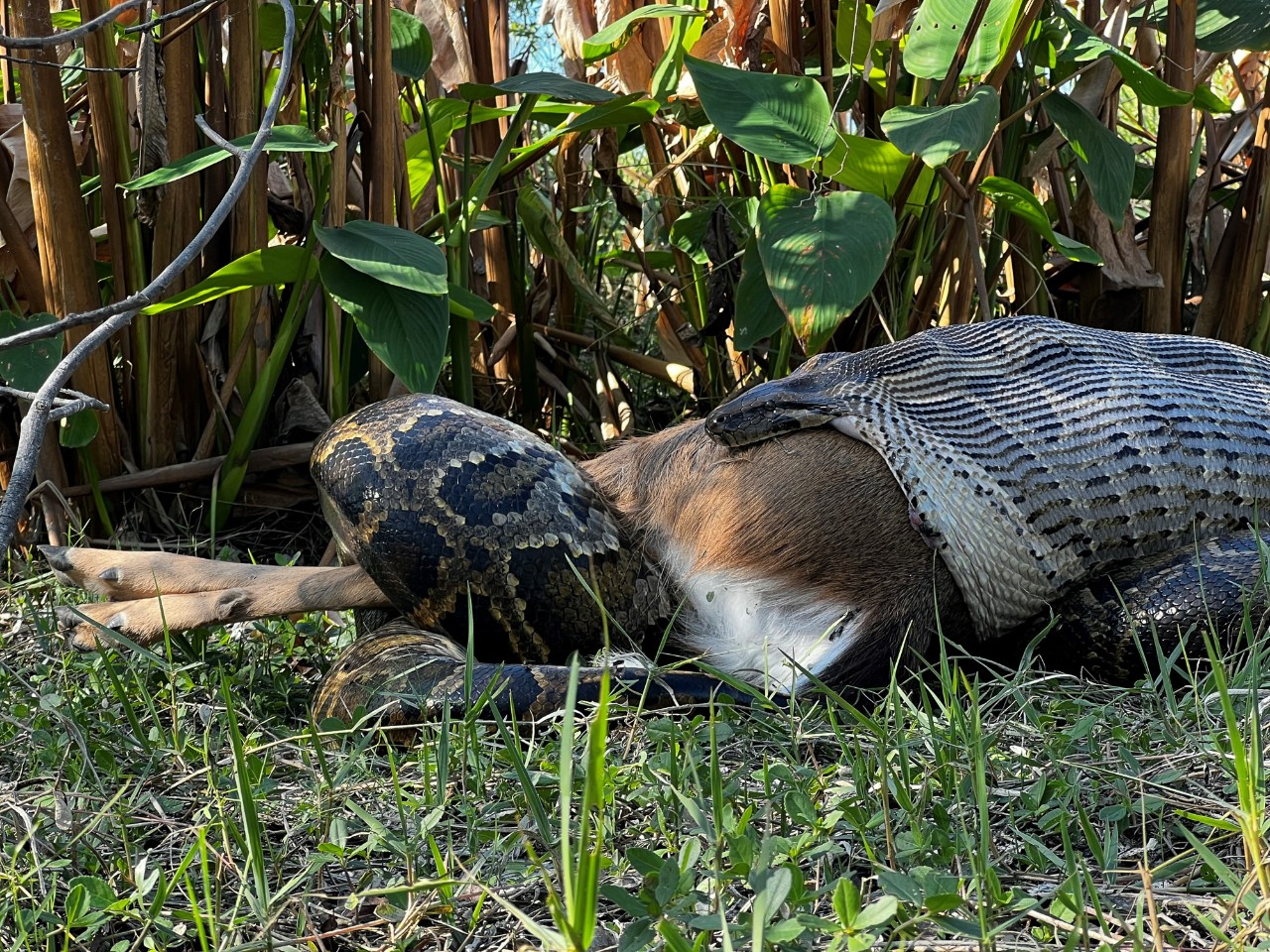If you already thought that Burmese pythons could stretch their elastic jaws inexplicably far, then boy have we got a surprise for you. Turns out they can open even wider than previously thought, and as a result can bring down bigger prey. There’s really not much that isn’t on the menu…
Burmese pythons are an invasive species in southern Florida, where they have wreaked havoc on various populations, including foxes, bobcats, and raccoons. They also predate on larger species – they’ve been known to swallow alligators and deer whole – but can only eat what they can fit inside their massive mouths.
However, according to the new research, this may not be much of a limiting factor. The snake’s gape – how big it can stretch its giant jaws – is even larger than previously thought. So big, in fact, that it defies mathematical models.
Researchers at the University of Cincinnati captured three Burmese pythons in and around Everglades National Park, poking around inside their mouths (not a job for the faint-hearted) to measure their size.
The largest of the reptiles measured a whopping 5.8 meters (19 feet) in length, making it the longest individual captured in Florida, although not the heaviest. All three snakes had a maximal gape of 26 centimeters (10.2 inches) in diameter, which exceeds the previously reported maximum of 22 centimeters (8.7 inches).
“That doesn’t sound like a lot – just 18 percent bigger,” study author Professor Bruce Jayne said in a statement, but the total area of the gape increased by 40 percent. That means that the beefiest Burmese the team found was slithering around with a gape circumference of more than 81 centimeters – to put that into context, it’s the equivalent of a 32-inch waist on a pair of pants.
It’s an impressively large jaw, that’s for sure, but it means the non-native species may have even more destructive potential than we thought as far larger prey items are on the menu.

That’s a mouthful. A nearly 4.6-meter (15-foot) long python devours a 35-kilogram (77-pound) deer.
Image credit: Ian Bartoszek/Conservancy of Southwest Florida
Based on past research that has taken a peek inside their bellies, we know that the snakes routinely bite off (almost) more than they can chew, killing and consuming animals that are bordering on too big to swallow. In the latest study, the researchers even observed one snake – the smallest in the study – consuming a 35-kilogram (77-pound) deer, which was two-thirds of the snake’s total mass and 93 percent of its maximal gape area.
“Watching an invasive apex predator swallow a full-sized deer in front of you is something that you will never forget,” said study author Ian Bartoszek.
It is the Burmese python’s bizarre mouth anatomy that renders it capable of such a feat: their lower jawbone is not fused at the front, and their skin is super stretchy, accounting for more than half the circumference of their gape, which means they can really open wide. Similar-sized species, without such adaptations, can only manage prey six times smaller.
It seems likely they could stretch even further. “It’s almost a certainty that we have yet to capture the biggest Burmese python in Florida,” Jayne said. “So, it seems very plausible that a record-breaking python with a gape of 30 centimeters [12 inches] could eat a 120-pound [54-kilogram] deer.”
This enormous voracity is a huge concern for conservationists in southern Florida, and elsewhere in the state as they threaten to spread.
“The impact the Burmese python is having on native wildlife cannot be denied,” Bartoszek added. “This is a wildlife issue of our time for the Greater Everglades ecosystem.”
However, knowing the size of prey that these predators can consume, as this study has helped with accomplishing, can help us to predict, and potentially mitigate, their ecological impact.
The study is published in the journal Reptiles & Amphibians.
Source Link: Turns Out Burmese Pythons Can Swallow Much Bigger Prey Than We Realized – *Gulp*